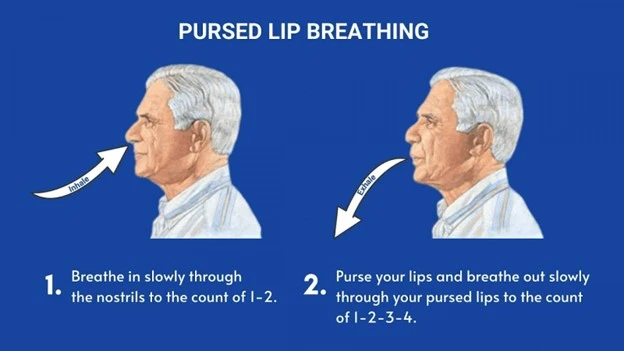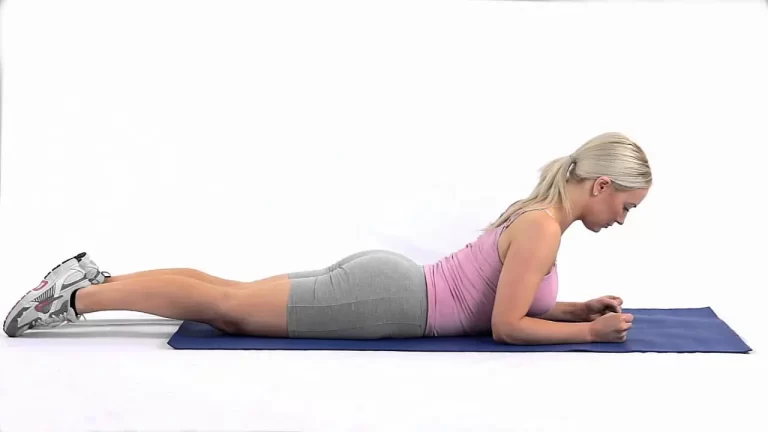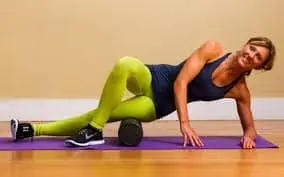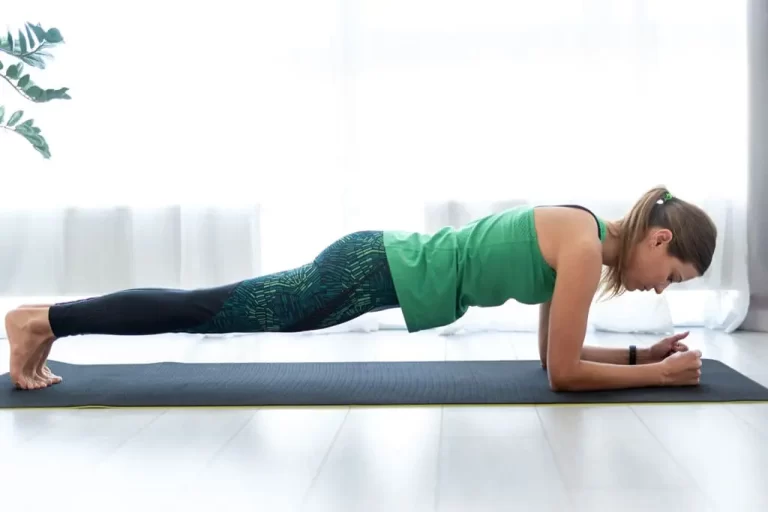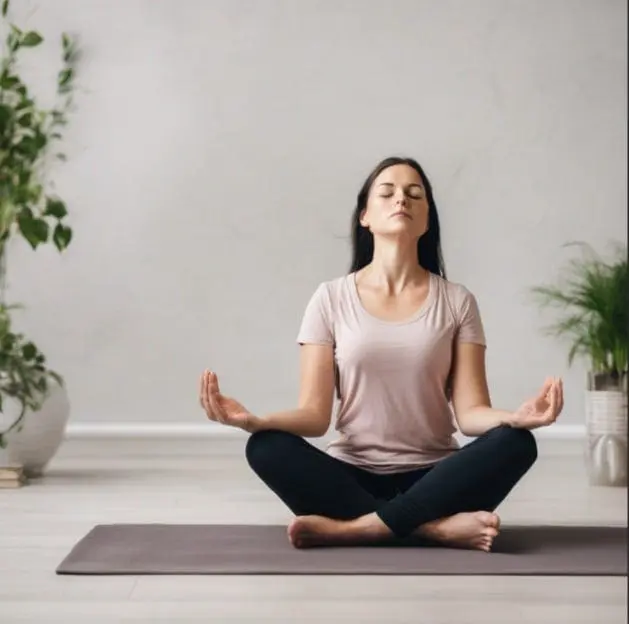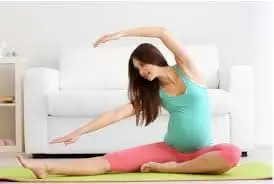Tai Chi: Improve Balance and Flexibility
Introduction
Tai chi is an ancient Chinese form of mind-body training, often known as tai ji quan or tai chi chuan. It is mostly recognized as a movement meditation and is often done in a group setting. It has been demonstrated to aid those with arthritis, lower blood pressure, increase cardiovascular fitness, and avoid falls. There are also significant psychosocial and emotional benefits.
Slow-motion flow is an important part of tai chi training, and it offers several health advantages, including increased balance, mobility, and coordination. Tai Chi Chuan or Tai Ji Quan are some names for it.
Tai chi originates in Chinese culture. Tai chi has several physical and mental health advantages. Tai chi offers various benefits, including increased cognitive performance and reduced anxiety and melancholy. It may also help you manage the symptoms of some long-term diseases, such as fibromyalgia or chronic obstructive pulmonary disease.
The ATCQA states that tai chi is a historic martial art that has its roots in China and dates back to the eleventh century A.D. Some believe it is the great-grandchild of the more conventional qigong practice.
Although there are many distinct types of tai chi, they are all founded on a similar set of ideas, such as:
- using the thought process to initiate motion
- Using loose, basic joints to move
- Body motion synchronization
- Making circular motions with your movements
- Maintaining a constant flow
The head of the Osher Center for Integrative Medicine and assistant professor of medicine, tai chi has been becoming popular even though it is still a prevalent practice in Asian countries.
Tai chi practitioners in the United States number about 3.75 million, as reported by market research firm Statista. Tai chi practitioners are more likely to be middle-aged and older, but more martial arts and sports versions of the art are drawing younger students.
Types of Tai Chi:
- YangThis popular method includes slower, more fluid movements and stresses balance.
- Wu is a well-known style that emphasizes both backward and forward-leaning motions.
- This type of Tai Chi accentuates footwork and is more akin to dance.
- Hey, It is a more advanced kind that focuses on qi, or life energy, however, it is rarely utilized in modern times.
How Tai Chi Works?
Tai chi involves standing with your feet on the floor and shifting your weight from your right to your left leg while doing a series of flowing motions. In a single session, there may be thirteen activities (or positions) or as many as sixty.
The mind holds our thoughts, feelings, attitudes, and beliefs, while the body represents our current physical condition and the soul is our breath. Tai chi has an impact on each of the areas of a person’s life.
Tai chi integrates awareness, movement, and breath. Tai chi’s physical postures and breathing exercises involve concentration and relaxation while pushing your body through the stances. Your knee flexes slightly, showing that you are moving normally and that your joints are flexible rather than strained.
It is carried out carefully and gradually. Some call it “mindfulness on wheels” or “meditation in motion.”You may benefit from tai chi by focusing your attention, breathing deeply, and being attentive in class.
Tai chi can help increase fitness and strength, particularly in the lower body, for those suffering from illnesses such as cardiovascular disease, heart failure, hypertension, metabolic syndrome, or chronic obstructive pulmonary disease (COPD): Tai chi can sometimes be just as effective as vigorous jogging.
Tai chi is also typically practiced in a social environment, which may enhance pleasure, foster a feeling of community, and support the promotion of physical activity.
Benefits of doing a Tai Chi:
Numerous advantages of tai chi include improved physical, mental, and emotional health as well as spiritual and therapeutic benefits. Although not all-inclusive, the following are some of the most well-known mental and physical benefits of tai chi.
- It’s a safe and efficient way for beginners to get some workout in. The slow-moving, low-impact exercises are safe, and gentle on your body, and they improve flexibility and posture whether you are new to exercising or to this form of fitness.
- Because it combines the advantages of stretching and relaxation into the exercise, it helps to alleviate stress-related anxiety. You’ll discover how to take breaks and breathe while advancing through the exercises gradually.
- It might lift your spirits. Tai chi has been found by researchers to offer potential benefits in lowering anxiety, mood disorders, and depressive symptoms.
- Your sleep quality will improve. Tai chi activity regularly may help you sleep better.
- fitness levels and medical conditions.
- You’ll sit more erect. Tai chi improves posture and alignment by combining slow, progressive motions.
- It reduces discomfort. It’s possible that doing tai chi can exacerbate your fibromyalgia symptoms. According to a 2018 study, tai chi provided greater pain alleviation than other recommended workouts for fibromyalgia sufferers.
Tai chi for seniors
One of the more well-known forms of elder mobility is tai chi. That’s why the low-impact movements included in this mild exercise program can benefit both active seniors and those who are new to fitness.
- Increases body awareness. Tai chi, also called slow-motion exercise, encourages deliberate, slow action and deep breathing. This combination helps seniors focus on how their bodies move, allowing them to pay attention and resolve any distress they are experiencing.
- Improves cognition. A brief 2018 study found a link between tai chi practice and cognitive improvement in seniors with mild cognitive impairment. This is encouraging news for older folks looking to improve their memory and organizing skills.
- Reduces risk and fear of falling. Holding balance, flexibility, and coordination becomes increasingly crucial as you age. While most physical exercises, particularly weight-bearing motions, can help seniors maintain and even improve their mobility, exercises like tai chi reduce the risk and fear of falling in older persons by improving balance and motor function.
- Eases arthritis pain. Elders suffering from chronic pain caused by diseases such as arthritis may find that practicing tai chi helps to alleviate their symptoms.
- May Improve Quality of Life in Coping With Chronic Diseases: There is evidence that tai chi may improve circulation, leading to higher blood pressure levels and a lower risk of heart disease.
- May Strengthen Bones: Because tai chi requires weight-bearing postures, one potential advantage of the practice is that it may reduce bone loss.
- May Improve the Experience of Aging: Although you’ve never been physically active, tai chi can help your body and brain age more effectively. Tai chi for older persons resulted in increased mobility, less joint stiffness, better sleep, less anxiety, improved cognitive process in those with mild cognitive impairment, and an overall higher quality of life.
Those who should not do Tai Chi:
Tai chi may be modified to accommodate everyone. If you wish to become more physically active or are currently suffering from a health condition (such as heart disease or COPD), consider tai chi training to meet your It’s important to exercise efficiently and softly.
While no studies have been published on the safety of tai chi during pregnancy, the NCCIH advises that it is probably safe in most circumstances, as long as you take proper measures and check with your doctor before beginning a tai chi practice while pregnant.
Advice for starting Tai Chi:
Follow these recommendations to choose the ideal instructor and class for you.
- Ask Around: There are no qualifications to become a federally licensed tai chi instructor. Until standards are developed, seek advice from community members and your healthcare provider (a doctor, massage therapist, acupuncturist, or integrative practitioner).
- Look at a Teacher’s Credentials: If you’re starting tai chi to address an underlying health issue, remember that certain teachers may be medically trained, so choose one who suits your needs. Some may be acupuncturists, physical therapists, or medical professionals who can grasp your circumstances and alter your movements accordingly. When speaking with a teacher, you can also question if they believe their teaching approach is appropriate for you, given any limitations you may have, such as arthritis.
- Give a Class a Chance: Ideally, choose a beginner-friendly course. Then, try a class (or a few) in your region to determine whether it aligns with your fitness goals. Consider taking an initial class before committing to a series of classes. Another option is to ask a teacher if you may observe one session to acquire a better understanding of what the practice entails before attempting it.
- Talk to the Teacher: In addition to asking a teacher whether their class is appropriate for your physical ability, ask if they cover the fundamentals of alignment, grounding, training, and breathing. Explain that you are a beginner and inquire whether they offer any beginner classes.
Here are the steps for Tai Chi exercises:
Warm-Up
Warming up the body, as with any exercise, is essential for injury prevention and the promotion of Tai Chi activities.
- Keeping your feet level with the ground and a little wider than hip-width apart, position them.
- Rest your arms at your sides.
- Your arms should flap against your torso during each turn.
- Repeat for 2-4 minutes, or until your body feels warmed up.
- You can then keep your neck, shoulders, and spine stable during the rotations, allowing each action to flow smoothly.
Commencing form
- Maintain a shoulder-width distance between your feet and split your weight equally over your two legs.
- Your arms are at your sides, relaxed.
- Inhale gently.
- Raise your arms to your shoulders or into a relaxed position. Relax your wrists and elbows. The exhale
- Relax and extend your wrists and arms.
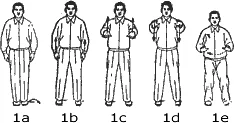
Broadening one’s chest
- Inhale slowly
- Take a comfortable stance or raise your arms to shoulder level. Relax your wrists and elbows.
- the exhale
- Let your shoulders unwind.
- Inhale slowly
- Keep your shoulders relaxed, please
- exhale
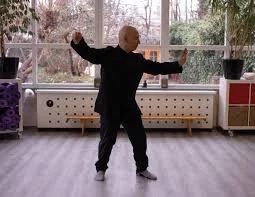
Dancing with Rainbows
- Inhale gently.
- Your weight should now be on your right side while you raise your right arm upwards, elbow bent.
- At the same moment, extend your left arm straight out in front of you (like a teapot or an archer preparing to fire his bow).
- Inhale gently.
- Lift your hands above your head and move your weight to the center in one smooth stroke.
- Exhale your breath.
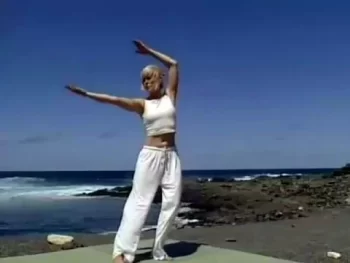
Circling arms
- Breathe in gently.
- Raise your right arm and flex your elbow to shift your weight to your right side.
- At the same moment, extend your left arm straight out in front of you; this position is like that of an archer preparing to fire a bow or a teacup.
- Breathe in gently.
- In one smooth action, move your weight to the middle and raise your hands aloft.
- Breathe out.
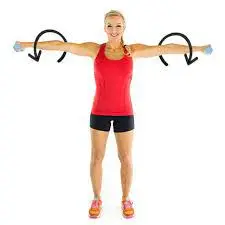
Twisting waist and swing arms
- Keep your knees slightly bent as you turn your torso to the right at the waist.
- Breathe in gently.
- With your palm facing up and your arm by your side, draw back your right arm in an arc, raising your elbow to shoulder height (or as high as feels comfortable).
- the release of breath
- Now that you are starting to rotate your wrist, your palm should be pointing forward. Think of this motion as being similar to a front crawl in swimming.
- Repeat on your left side. Experienced practitioners will be performing the motions with both arms simultaneously, but for beginners, moving one side at a time is acceptable and makes it simpler to achieve high-quality movement.
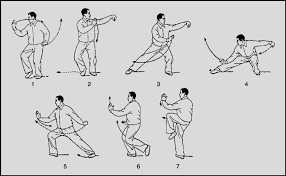
Rowing the boat
- Breathe in gently.
- Raise and extend your arms. You are holding your hands up.
- the release of breath
- To grab a ball, inhale, twist your body to the left at the waist, and raise your left arm to your desired level. After you’ve breathed, restore your left arm.
- The sitting images demonstrate the form while holding a ball; a ball is unnecessary for this exercise.
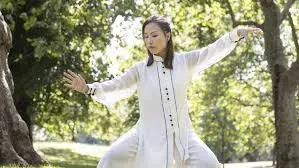
Carrying the moon
- Take a breath.
- Now, stretch both arms to the left while keeping your head supported by your hands.
- Release the breath
- Bring your hands down. After that, bear right and proceed.
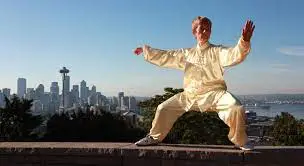
Twisting waist and pushing palms
- Take a deep breath, raise your hands to your waist, palms up.
- Take a breath out, then turn your waist to the left.
- Push with your right hand pointing front and your right arm out in front of you, as you’re attempting to stop traffic.
- After you release your breath, adjust your posture so that your weight is evenly distributed in the center.
- If it helps, you can practice the motion with just one arm at a time until you can coordinate both arms together.

Playing with clouds
- Take a breath.
- With your arms relaxed and extended out in front as if holding a baby, turn to your left. As you move your weight to your left foot, bend at the waist.
- Breathe deeply and repeat the motion towards your right (your right hand will be the farthest from your midsection this time).
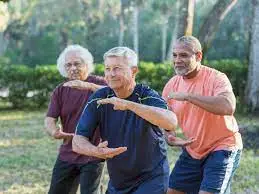
Scooping from the sea
- Inhaling
- As you progressively separate your arms and move your weight to your right foot, raise your hands over your head or as far as you feel comfortable.
- Let go of the air.
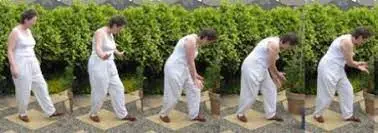
Playing with waves
- The back leg supports your weight.
- Let out a breath, turn to your front leg, extend your arms, and maintain a forward-pointing posture with your hands.
- After letting out a breath, keep your hands on the floor and shift your weight back to the center.
Spreading your wings
- As you stand, place your left foot forward. Taking a breath, extend your arm forward and maintain it there. You should have a loose, slightly bent elbow position.
- Try to reach as high as your arms will comfortably allow, or chest height. Bringing your hands together, form a fist. If you’re feeling secure, let your right heel rise off the ground as you go forward.
- After letting out a breath, step back and shift your weight to your right foot. Spread your arms apart like wings while you work, reaching as far back as is comfortable for you.
Punching
- By placing your feet shoulder-width apart and dividing your weight equally between your two legs, you can maintain your balance.
- The arms remain at the sides, and the fists are soft.
- Exhale, then bring your right arm up to your chest if you can.
- Take a breath.
- Similarly, move your left arm.
Flying like a wild goose
- Take a deep breath, bend slightly forward so that your feet support your entire weight, and raise your arms above your head in a sideways motion.
- Your wrists will extend out to the sides and away from your body during this move.
- Throughout, your arms stay relaxed.
- Breathe out and lower yourself to your knees, lowering your arms and wrists.
- You’re flying high right now, like a wild goose.
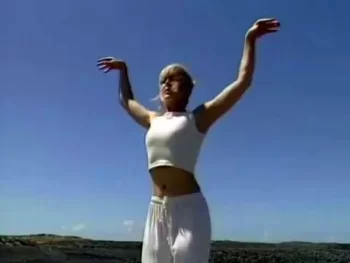
Spinning wheels
- Spread your weight equally between your legs and set your feet shoulder-width apart to maintain balance.
- Inhale deeply, raise your arms above your head and twist your torso to the right to form a large circle with your palms facing each other.
- Exhale, then move your arms to your left side, maintaining the same hand-to-hand spacing.
Bouncing the ball
- Roll over onto your right foot.
- Take a breath.
- Remove your left foot from the floor.
- Proceed to the other side.
What you should expect before, during, and after Tai Chi:
It might be an amazing experience to take your first tai chi lesson. Every instructor has a different approach to teaching, but to stay relaxed in the classroom, try these general guidelines.
Wear loose clothing. Put on loose-fitting clothing and shoes.
Introduce yourself. Before class starts, let your instructor know if you have any health concerns (such as knee pain) so they can help you adjust any activities.
Warm-up. Every educator will warm up individually. Standing with feet hip-width apart and knees slightly bent is a common instruction given to students. Next, have students walk side to side to get a sense of where they are, and urge them to picture their legs as a tree’s trunk—rooted and anchored.
Go easy on yourself. If you’re unfamiliar with the maneuvers, that’s OK. I ask novices to do two things: one, try to focus as much as possible on their body, and second, attempt to keep their thoughts contained within the room. It’s also fine to feel uncoordinated. The most essential thing is to attempt to let go and be open; most individuals find that practicing tai chi helps them do so. It’s simply practice; you don’t need to be perfect.
Take five, if necessary. Pushing that feels unpleasant has no explanation.
You may feel changed. Anticipate feeling different after class. It’s [usually, for most people] a peculiar mix of feeling acutely aware, fully present, and invigorated. With further exercise, these feelings may gradually lead to a happier mental state.
You may want more. The primary premise is that because tai chi increases self-confidence in one’s body’s ability to handle issues, some people may utilize it as a “gateway exercise.”
Set your schedule. Although it can be challenging to begin a new exercise routine, my professional view is that practicing tai chi for the full benefits of one hour, three times a week, 12 weeks is the best length of time. Try aiming for an hour every other day for 16 weeks if that proves to be too difficult.
Take it home. If you want to get better at tai chi but aren’t able to practice frequently enough, you can train at home. Follow the instructor’s instructions and spend ten minutes in the hip-width positions, going back and forth while maintaining soft knees and the backs of your hands on your lower back. Do this three times a week. It allows you to decompress and be physically present while relieving the strain of mastering the motions at home.
Adjust your expectations. If you have been inactive or are new to exercise, tai chi may provide rapid benefits. On the other hand, it can take longer to experience these potential mental and physical advantages if you already exercise frequently.
Tai Chi Risks:
Tai chi is typically safe for most people who do not have any major medical issues. Wayne and colleagues found in a prior thorough analysis of 153 randomized controlled trials that although some patients have minor muscle aches and pains after tai chi, major adverse effects are unlikely to happen. That goes double for newbies. However, before beginning a new fitness plan, speak with a qualified healthcare professional.
Precautions:
Tai chi is seen to be among the safer forms of physical exercise, but it’s always a good idea to see your doctor before beginning anything new, especially if you have any health issues already.
If you experience dizziness or fainting while taking a tai chi lesson, stop what you’re doing and sit down.
FAQs
How can you describe tai chi?
Tai chi, also known as Tai Ji Quan or Tai Chi Chuan, is an ancient Chinese mind-body workout. It is mostly recognized as a movement meditation and is often done in a group setting.
What are the health advantages of Tai Chi?
Tai Chi enhances balance, strength, flexibility, and aerobic movement on a physical level. It has been demonstrated to aid those with arthritis, lower blood pressure, increase cardiovascular fitness, and avoid falls. There are even significant psychological and emotional benefits.
What happens during a tai chi class?
Your instructor will lead the class through each practice, guiding you to stay calm and breathe deeply, after a warm-up to prepare your body and mind for the lesson. The class will usually move as a unit since the moves are done slowly and deliberately.
What is tai chi exercise good for?
Practitioners of tai chi reported improvements in their mobility—walking, standing, getting out of bed, and getting in and out of a car—as well as in their degree of soreness and stiffness, balance, and physical and mental well-being.
Which type of workout is tai chi?
To begin, tai chi is a full-body workout that improves the muscles. You must stand upright, move gently as if you were pressing against a soft surface, transfer your weight, and hold certain postures, such as standing on one leg or staying in a squat.
Why is tai chi so difficult?
It might be difficult to start tai chi and include your entire body at once because the practice calls for full-body integration of training.
References:
- Tirgar, P. (2023b, December 13). Tai Chi: The Moving Meditation – How to Do Tai Chi Complete Guide. Mobile Physiotherapy Clinic. https://mobilephysiotherapyclinic.in/tai-chi/
- Migala, J. (2024, August 1). What Is Tai Chi? A Guide to Tai Chi for Beginners. EverydayHealth.com. https://www.everydayhealth.com/wellness/tai-chi/guide/
- Lindberg, S. (2019b, June 3). How to Do Tai Chi. Healthline. https://www.healthline.com/health/exercise-fitness/tai-chi-moves

